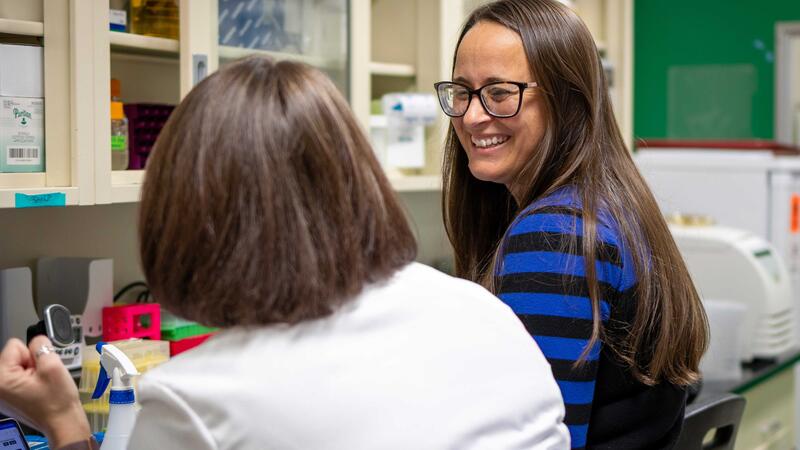News
Unraveling the mysteries of the plant microbiome
Three years after joining the Great Lakes Bioenergy Research Center, Michigan State University microbiologist Sarah Lebeis has been tapped to guide the center’s scientific research.
If you want to create sustainable biofuels from less and for less, you’ve got a range of options. And one of those options is to go microbial, enlisting the help of tiny but powerful bacteria in creating a range of renewable biofuels and chemicals.
Technologies for converting non-edible biomass into chemicals and fuels traditionally made from petroleum exist aplenty. But when it comes to attracting commercial interest, these technologies compete financially with a petroleum-based production pipeline that has been perfected over the course of decades.
How healthy a plant matures depends on how well it grows during its early life stages, which is not a surprise to anyone who has raised children.
In the face of mounting pressure, like inconsistent temperature patterns or the burden to produce more for us due to the lack of new arable land, plant health might be taking a beating.
The Great Lakes Bioenergy Research Center (GLBRC), one of three bioenergy research centers established in 2007 by the Biological and Environmental Research program in the U.S. Department of Energy’s (DOE) Office of Science, recently published its 1,000th scientific paper.
MADISON — In the Microbial Sciences Building at the University of Wisconsin–Madison, the incredibly efficient eating habits of a fungus-cultivating termite are surprising even to those well acquainted with the insect’s natural gift for turning wood to dust.
If science classes at Bonduel Middle School had a rallying cry it would be, “Don’t expect to find the answers in the book!” And Lisa Sorlie, enthusiastic advocate of innovative classroom science, would definitely be holding the megaphone.
Kathryn Bloodworth’s passion for science is taking her places. The Persian Gulf country of Qatar, to be more specific.
Bloodworth started college as an early childhood education major but changed majors her sophomore year after her first day of biology.
During the kraft process used to convert wood into wood pulp, the structural material lignin is partially converted into molecules like stilbene. Stilbenes are also naturally occurring in plants and some bacteria, and may play a role in plant pathogen resistance.
he Great Lakes Bioenergy Research Center (GLBRC) had reason to celebrate when Clarivate Analytics – formerly the Intellectual Property & Science business of Thomson Reuters – recently released its 2016 list of “Highly Cited Researchers” in the natural and social sciences.
Poplars and other trees can be bred to break down more easily to make biofuel and other products such as paper, according to scientists at the Great Lakes Bioenergy Research Center.





